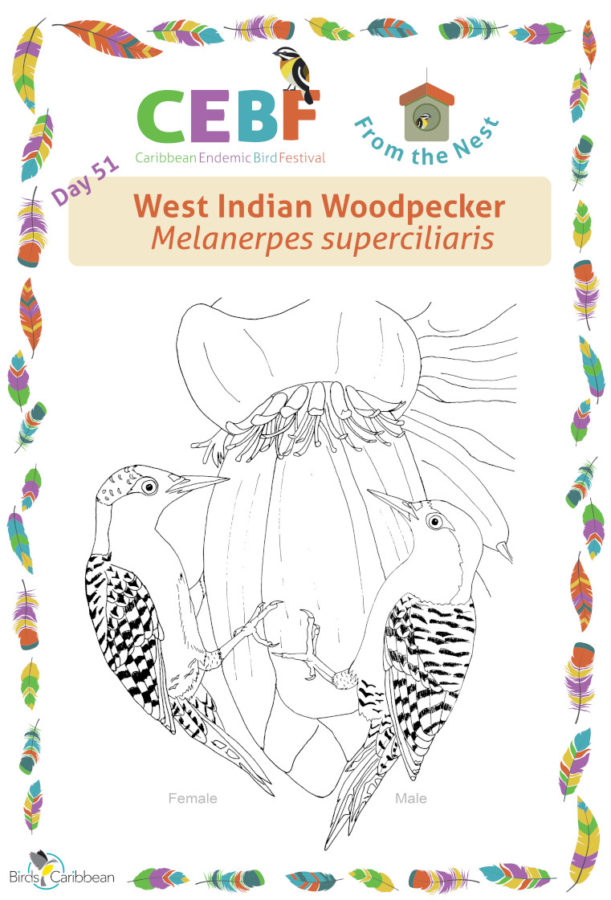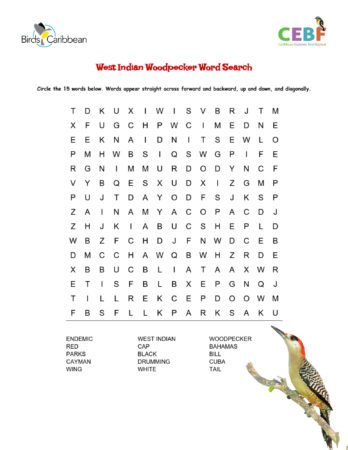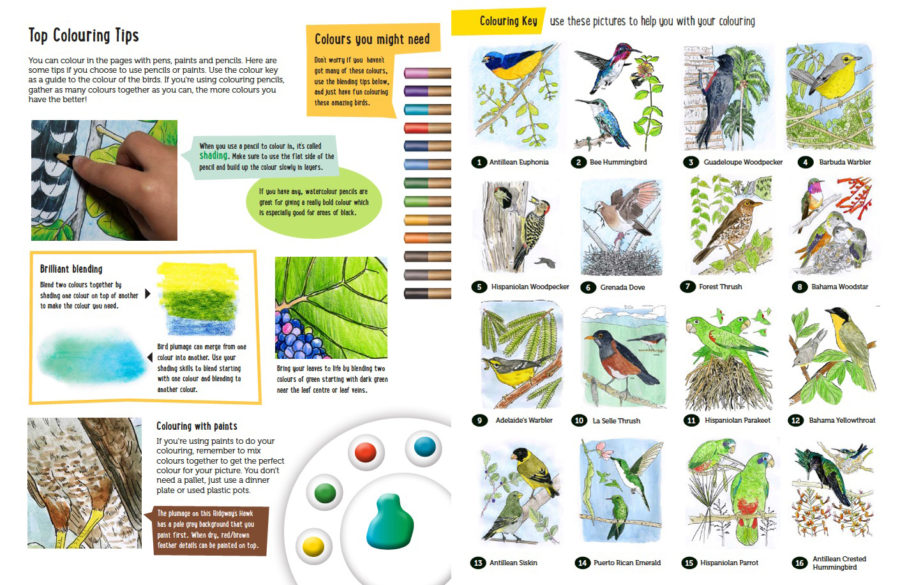Celebrate the Caribbean Endemic Bird Festival (CEBF) with us! Our theme in 2021 is “Sing, Fly, Soar—Like a Bird!” Have fun learning about a new endemic bird every day. We have colouring pages, puzzles, activities, and more. Download for free and enjoy nature with your family at home.
Endemic Bird of the Day: West Indian Woodpecker
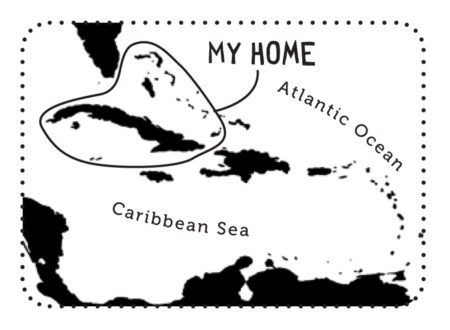 Rowdy and feisty, but resourceful and a master carpenter – that’s the West Indian Woodpecker (Melanerpes superciliaris). It is a resident bird in Cuba, Grand Cayman, and The Bahamas. Like many other birds across the Caribbean, it has many local names, for example in English the Bahaman Woodpecker, Cayman Woodpecker, and often simply Red-head.
Rowdy and feisty, but resourceful and a master carpenter – that’s the West Indian Woodpecker (Melanerpes superciliaris). It is a resident bird in Cuba, Grand Cayman, and The Bahamas. Like many other birds across the Caribbean, it has many local names, for example in English the Bahaman Woodpecker, Cayman Woodpecker, and often simply Red-head.
At 26-30 cm long this is quite a large, impressive woodpecker, with a big black bill, crimson eye, and boldly marked with black-and-white barring and chevrons on the back, wings, and tail. Both sexes have bright red on the head, males with a complete red cap, females only at the nape. In flight its white wing patches are especially striking. There are regional differences: Cuban birds (subspecies superciliaris) have a big black eye-mask, which those on Grand Cayman (caymanensis) lack. In The Bahamas, 3 subspecies occur – on Abaco (blakei), San Salvador (nyeaus) and Grand Bahama (bahamensis). The Abaco and Grand Bahama population have more black behind the eye than the San Salvador population. Bahamas birds are also smaller than the nominate subspecies.
West Indian Woodpeckers are frequently heard before they are seen, constantly chattering loudly, some might say they are noisy! When breeding they also communicate with each other by knocking out drumming rolls on branches and snags. All in all, West Indian Woodpeckers are hard to miss.
Typically found in open, dry or damp, scrubby woodlands, they have moved into man-made environments like palm groves, plantations, parks, and even gardens. Thankfully, this is one woodpecker that is generally doing well, being widespread in Cuba and Grand Cayman. The Grand Bahama subspecies is in trouble, however. It was thought to be extirpated after hurricanes devastated woodland habitats in 2004-2005, but then individuals were heard calling on the eastern part of the island in 2019. We don’t know yet if the population survived after Hurricane Dorian in 2019.
West Indian Woodpeckers will hack into trees to find insects, but like some other Caribbean woodpeckers they are omnivorous and opportunistic, eating lizards, frogs, berries, and fruit, and feeding these to their young. These resourceful birds forage at all levels, from tree-tops to the ground. Finally, and fascinatingly, West Indian Woodpeckers have shown how intelligent they are by using so-called ‘anvils’—cracks in trees where they wedge and work on large or hard items of food. This is regarded as a form of tool-use. Learn more about this species, including its range, photos, and calls here.
Contributed by Gerard Gorman. Gerard is author of Woodpeckers of the World (Helm/Bloomsbury 2014) which includes all the woodpecker species found in the Caribbean.
Colour in the West Indian Woodpecker!
Download our West Indies Endemic Bird colouring page. Use the photos below as your guide, or you can look up pictures of the bird online or in a bird field guide if you have one. Share your coloured-in page with us by posting it online and tagging us @BirdsCaribbean #CEBFfromthenest
Listen to the call of the West Indian Woodpecker
The distinctive calls of the West Indian Woodpecker are a high-pitched harsh, often repeating trilling “Krrruuuuu-krrruuuu-kruu….”
Puzzle of the Day
Click on the image below to do the puzzle. You can make the puzzle as easy or as hard as you like – for example, 6, 8, or 12 pieces for young children, all the way up to 1,024 pieces for those that are up for a challenge!
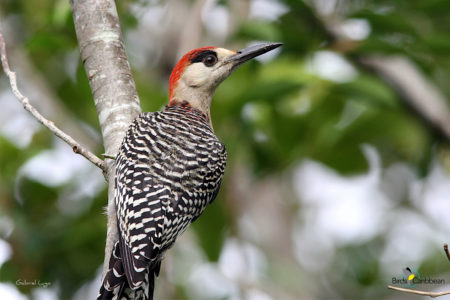
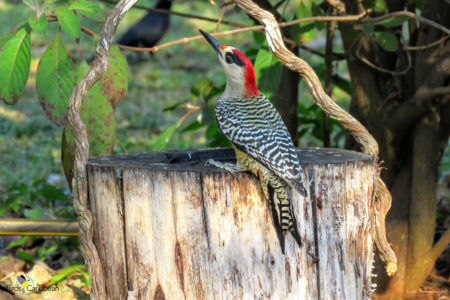
Activity of the Day
FOR KIDS: Remind yourself of some our interesting endemic bird facts by searching out all the clues in our West Indian Woodpecker word search. Can you find all the words? You can find the answers here.
FOR KIDS AND ADULTS: With lots more Caribbean endemic birds to enjoy and colour in during the coming weeks take a look at our colouring-in guide. This will give you some hints and tips on how to make your endemic birds look even more beautiful! Share your coloured-in page with us by posting it online and tagging us @BirdsCaribbean #CEBFfromthenest
Enjoy the videos below of West Indian Woodpeckers in the Wild! The first shows a male excavating a nest hole in Cuba. In the second you can see a female in Cuba, search for termites to eat. The final clip, also from Cuba, show a juvenile female preening on top of a tree stump.

